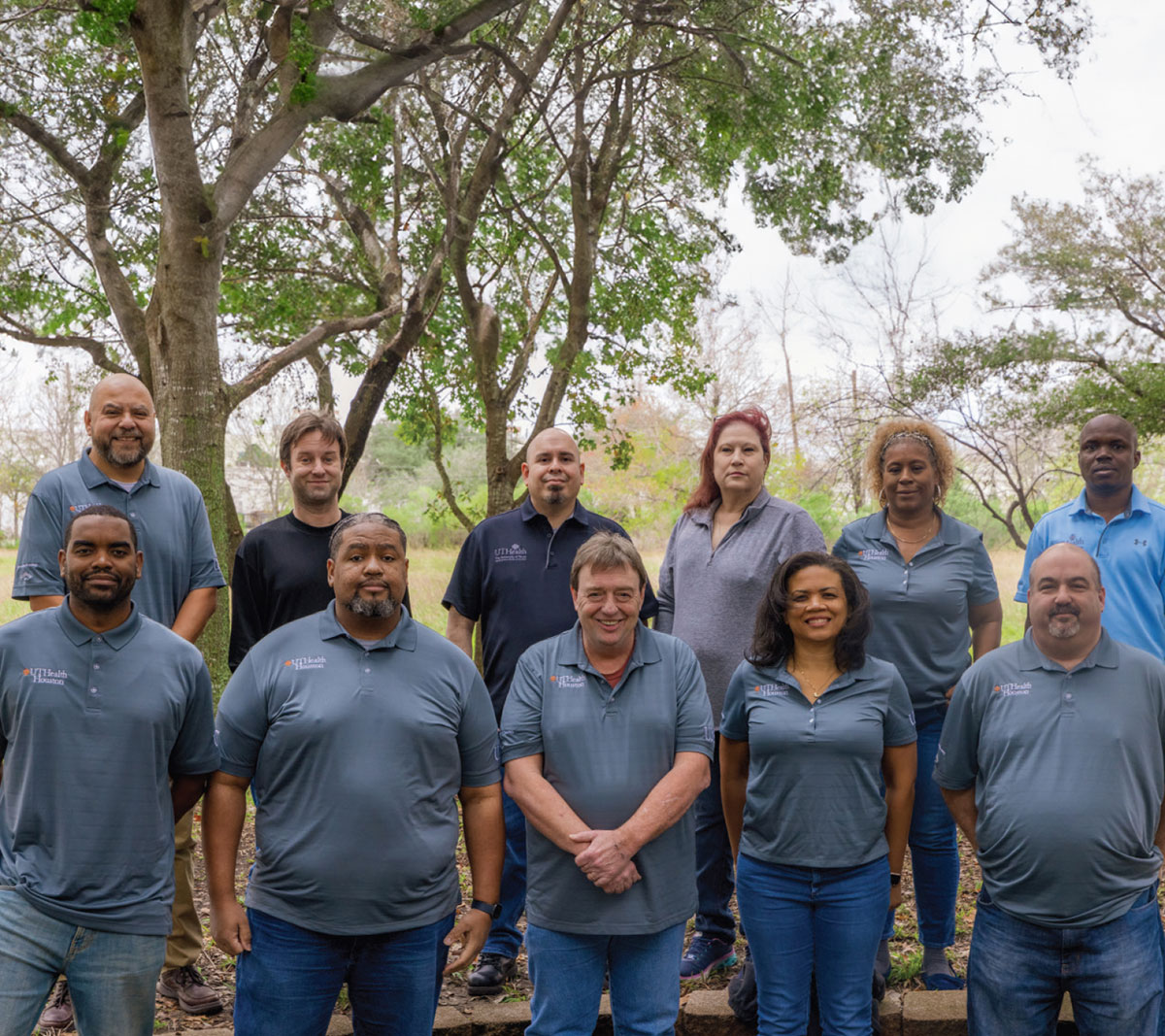Apache Hadoop is a tool that handles and makes sense of large quantities of data at high speed for research needs. It uses a Hadoop cluster—a group of computers—to break down and process information. It's flexible, scalable, and uses standard hardware and the university's setup to include numerous high-powered computers, linked by a super-fast network.
This network handles large quantities of data without slowing down other systems. It can support various software tools tailored to research needs. For researchers, this means having a tool capable of handling vast amounts of data, allowing efficient management, pattern recognition, and hypothesis testing.
McWilliams School of Biomedical Informatics at UTHealth Houston has a server that uses one or more graphics processing units (GPU) to accelerate various computing tasks. GPUs are specialized hardware devices that can perform parallel operations on large amounts of data, such as rendering graphics, processing images, or training machine learning models. A GPU server can leverage power to speed up applications that require high performance and low latency.
GPU Servers
GPU Cores
Total GPU Memory
GPUs
The Robotic Process Automation (RPA) team leads efforts to develop and create new ways to employ “bots” to save the university time and resources. RPA is the innovative use of software to create bots that perform repetitive rules-based knowledge work across an organization as a substitute for, or aid to, human workers.
Bots are considered digital workers and are designed to accomplish processes that are well defined and repeatable, with the intent of saving a human worker time. The hope is that employees will be happier in their positions, because they no longer spend hours on tasks that are repetitive and time-consuming.
Employees can then focus on tasks that are analytical, contributing more impactful work. The team has already created 11 bots that are currently in use. Some that are in production include one that automates the revenue and accounts receivable journal for the Epic EHR system, another that automates security incident responses on phishing emails, and one that inactivates the accounts for terminated employees.
The Cloud Solutions team works with the university community to utilize Amazon Web Services (AWS). It currently hosts the Children’s Learning Institute’s Engage environment and hosts multiple web servers for UTHealth Houston School of Public Health. IT Infrastructure uses AWS to host different file types and data including backup for Microsoft 365 (Email/Teams/OneDrive). The storage in AWS is just over 2 petabytes.
The partnership with AWS offers a broad range of Big Data storage, processing, and analysis options:
The Cloud Solutions team has invested in the Microsoft Azure cloud computing platform for application development, integrations with third-party clouds, and application with Microsoft 365, modernizing ways to share data and experimentation in the rapidly evolving world of artificial intelligence.
Services currently offered:
These services can be used to build a variety of Big Data applications, including data warehousing, real-time analytics, and machine learning to build models that make predictions or recommendations.
The benefits of using AWS for Big Data:
The team is also working with schools and departments in the use of Azure DevOps for source code management, team collaboration, and code deployment pipelines.
Azure DevOps is a cloud-based service that helps teams to build, test, and deploy software. It includes a variety of features: source code management, build automation, test automation, and release management. By using Azure DevOps, we are able to improve the efficiency and effectiveness of its software development process.

When UTHealth Houston students, faculty, and staff need to call the IT Solution Center—also known as the “Help Desk”—the highly skilled people who answer those calls do not work for a vendor or happen to be in another country. They are all full-time UTHealth Houston employees who are dedicated call responders, working together to get computers or mobile devices working again.
The team prides itself on being available beyond regular business hours in order to serve everyone within the UTHealth Houston community. All calls about technical issues are with an on-call team member. The 11 members of the team bring unique perspectives and an array of different experiences.
How to contact the IT Solution Center:
University Web Services collaboratively supports electronic communication efforts across the university to build online resources that are innovative, attractive, accessible, and user-friendly.
The group's primary focus is to build and maintain institutional web gateways, while partnering with other UTHealth Houston offices to offer tools and resources. They also track university website traffic and trends, facilitate the creation of web standards, and ensure that those standards are implemented campuswide.
Additionally, the team supports the Office of Public Affairs by maintaining the functionality of campus emergency communication channels, the university emergency website, intranet and website alert banners, and the campus digital signage system.
How to contact University Web Services:
In 1993, the Office of Academic Computing at The University of Texas Health Science Center at Houston began writing Unix code, as well as graphics and pages, to publish the third known official website in Texas.
It was also said to be the 60th organizational website in the world.